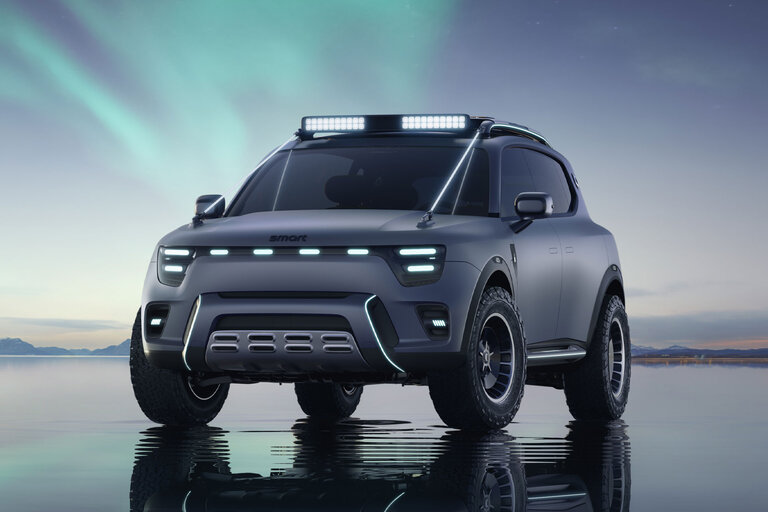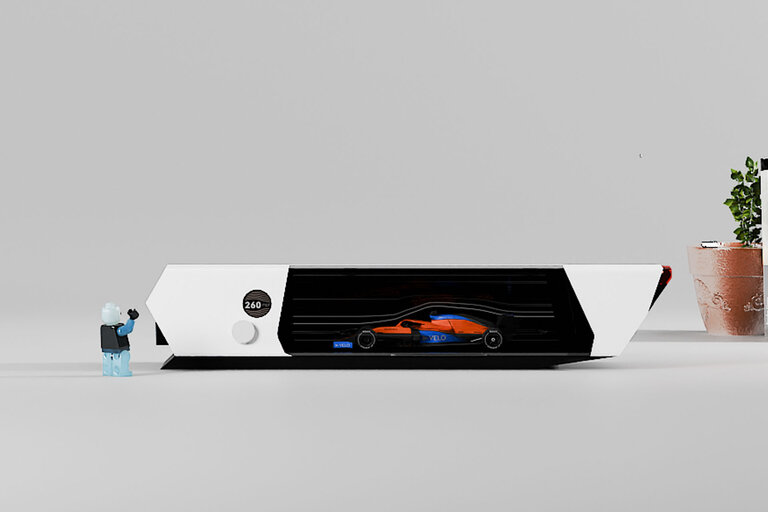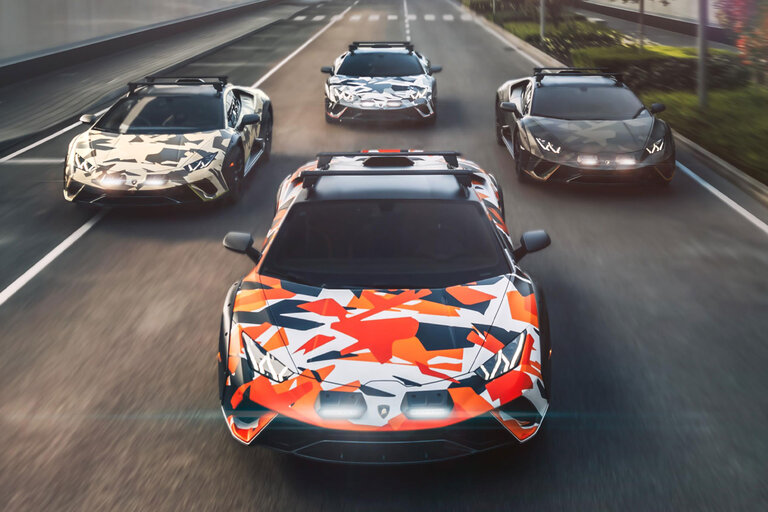
“I thought it was that little Range Rover,” a friend said. Words to that effect were heard later that day from another friend. Several more folks made the same mistake during our time with Mitsubishi’s freshened 2022 Eclipse Cross. Confounding, we thought. After all, pretty much no one at Car and Driver would ever confuse a Mitsubishi with a Range Rover, especially knowing how utterly underwhelming the little crossover has been since its 2018 introduction. Then again, the squinty new headlights and optional black “ECLIPSE CROSS” block letters spanning the Mitsubishi’s new clamshell hood definitely evoke, well, a Range Rover Evoque. Pure coincidence, we’re sure.
Mid-cycle updates typically include minor revisions to the front and rear end and perhaps a few new colors, but Mitsubishi evidently realized that the Eclipse Cross needed more than that to have a chance in one of the most cutthroat segments of the market. In fact, Mitsubishi let its middle-child crossover skip the 2021 model year to undergo a remarkably thorough mid-cycle makeover for 2022. Was it successful?
Well, if bigger means better, then it certainly was. The aforementioned front- and rear-end changes contribute 5.6 inches of additional length. The more prodigious posterior brings several benefits, starting with improved proportions, as it balances out that beaky nose. More significant is the replacement of the original Eclipse Cross’s awful split rear window with a more conventional, single-pane window that actually delivers decent rear visibility. The old conjoined taillamps have split into expressive, three-pronged details. And on the pragmatic front, Mitsubishi says the lengthened rear increases the cargo space, but both the 2020 and ’22 share a 23-cubic-foot spec behind the second row. Fold the seats and the 2022 model’s 50 cubes shades the ’20 by just one. Mitsu also claims an 11 percent increase in floor space in the cargo area. The 60/40 split rear seats can recline and slide 8.5 inches fore and aft.
The increased usability of the cargo hold improves one of the shortcomings of the original Eclipse Cross, while a thoughtfully reconfigured dashboard addresses some of the others, starting with its new 8.0-inch touchscreen infotainment system. That system is standard on all but the base models, and replaces the old 7.0-inch screen infotainment system that was paired with a touchpad on the console. New features include physical volume and tuning knobs (at last) and a native navigation system. While the system hardly raises the bar in any particular respect, at least it feels contemporary and is ergonomically sound. And moving the touchpad allowed the cupholders to get out from under the driver’s elbow and slide closer to the center of the console.
Throughout the Eclipse Cross cabin, material quality is consistently good, so banish the thought of that Galant you rented in Phoenix back in 2012. Further serving to spiff up the place is newly available gray leather upholstery on top-dog SEL trim levels, a welcome addition to an interior color palette that heretofore consisted of black, black, and black, with a splash or two of silver trim. The SEL trim level also comes with big steering-wheel shift paddles to augment the beefy conventional gear lever on the console. Those paddles give you manual selection of eight fixed ratios offered by the continuously variable automatic transmission (CVT), for those times you want to pretend you have actual gears.
We never did. With 3,611 pounds of weight and just 152 horsepower and 184 pound-feet of torque emanating from its tiny, turbocharged 1.5-liter four-banger, the Eclipse Cross didn’t exactly invite back-road shenanigans or stoplight shootouts the way that its ’90s-era namesake might have. Its 8.4-second mosey to 60 mph was a couple of tenths quicker than the 8.6 seconds set by an all-wheel-drive Eclipse Cross model we tested in 2018, but that’s still tepid compared with the Mazda CX-30, which hits 60 in 7.6 seconds with its base engine and in 5.8 seconds with the optional turbo four. That said, the 1.5-liter’s modest power comes on so smoothly, you might not even know it’s turbocharged. It’s also extraordinarily quiet in operation, even at highway speeds. The power delivery, such as it is, seems optimized for the Eclipse’s likely role as an urban runabout.
Clearly, acceleration isn’t the Eclipse Cross’s forte. Ride suppleness, on the other hand, very much is. Turns out, reworking the structure in pursuit of more cargo space also presented opportunities to improve ride quality, quietness, and steering precision. Together with the near-silent engine, the refined chassis and well-tuned steering, the Sport Cross exudes a sense of maturity usually reserved for crossovers perched a bit higher up the chain.
Unfortunately, handling limits remain as modest as ever. In corners, the compliant suspension allowed the Eclipse Cross to list like a sailboat in 80-mph wind, and its 225/55R-18 Bridgestone Ecopia H/L 422 Plus all-season tires could only generate a modest 0.76 g of grip on the skidpad. And the 2022 model couldn’t even match the previous model’s 178-foot 70-to-zero-mph braking figure, requiring an additional four feet. Some of the blame might be attributed to the additional 115 pounds our 2022 SEL model was carrying compared to the 2018 model, which was a next-rung-down SE.
Also as before, fuel economy for the Eclipse Cross proved surprising, averaging 27 mpg during its stay with us and 27 mpg on our 75-mph highway fuel-economy test. Both of those numbers trump the EPA’s 25 mpg city and 26 mpg highway estimates, but it still trails its competitors, many of which cover more than 30 miles on a gallon of gas at 75 mph. With such lackluster acceleration and good but not great fuel economy, the Eclipse Cross begs the question: What’s the point of a downsized vehicle—with a downsized engine—if it doesn’t deliver stellar fuel economy?
One could make an argument that the 2022 Eclipse Cross represents decent value, as it packs a respectable list of features at its $24,490 starting point. But our SEL tester added the $1,600 all-wheel-drive option, plus sundry option packages that included enhanced safety features, a motorized head-up display, heated rear seats, and cargo-area accessories. Throw in those $110 “ECLIPSE CROSS” letters across the hood, and the total price bloated to $34,670. Feature-laden though the little Mitsubishi may be, that seems like some real money for something so slow, especially considering that the cost won’t be offset by savings at the pump. With such a weak engine almost never threatening to break the wheels loose, you could skip the all-wheel drive and save both money and weight while likely boosting fuel economy and acceleration figures. Alternately, you could consider one of its many appealing competitors. The Eclipse Cross got a worthy refresh, but what it really needs is a fresh start.
This content is created and maintained by a third party, and imported onto this page to help users provide their email addresses. You may be able to find more information about this and similar content at piano.io
Source link





